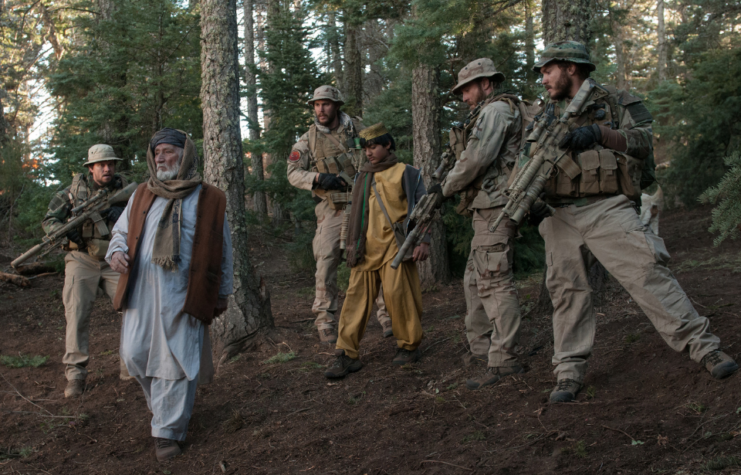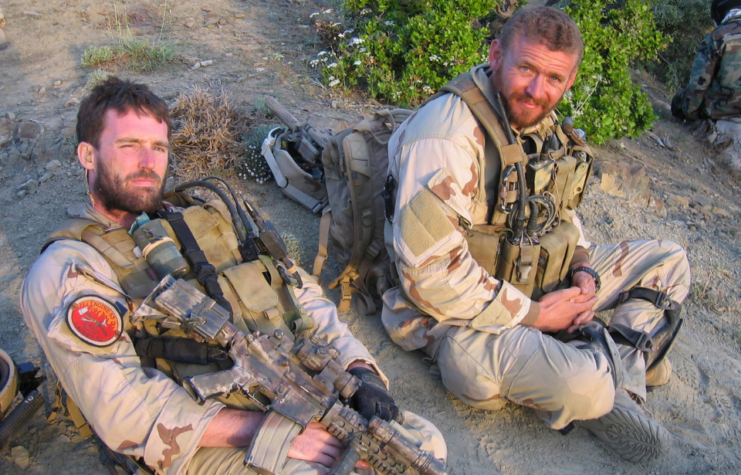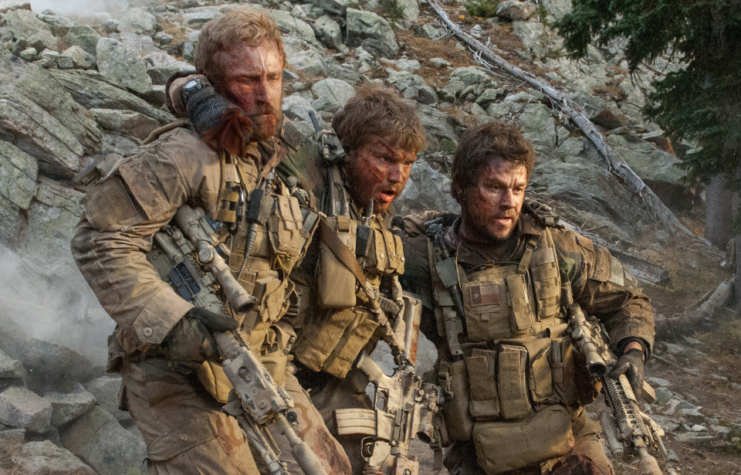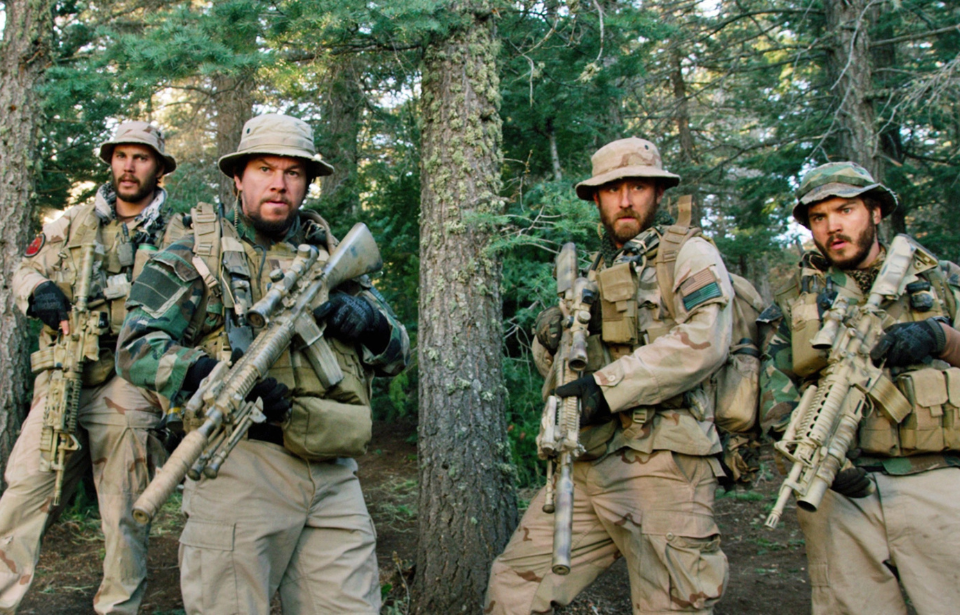The American biographical war film, Lone Survivor, was released in 2013. Starring Mark Wahlberg and directed by Peter Berg, it depicts the events of Operation Red Wings, a mission that took place in Afghanistan in 2005, with disastrous results. The film is one of only a handful to deal with the War In Afghanistan, and it’s helped create meaningful conversation regarding the conflict.
Lone Survivor (2013)

Lone Survivor is based on the real-life Operation Red Wings, a failed 2005 US Navy SEAL-involved mission in Afghanistan. The film follows the harrowing ordeal of the four-man SEAL team as they embark to capture or kill a high-ranking Taliban leader.
Marcus Luttrell (Mark Wahlberg), along with three other SEALs, Michael Murphy (Taylor Kitsch), Danny Dietz (Emile Hirsch) and Matthew Axelson (Ben Foster), are deployed to Kunar province, a hostile region known for its insurgent activity. However, their mission takes an unexpected turn when they accidentally stumble upon a group of local shepherds.
Faced with the difficult decision to either kill or let them go, the team chooses to release them, despite the possibility they may expose their position to the Taliban. Soon after, rebel fighters attack, leading to a brutal firefight.
Outnumbered and outgunned, the SEALs find themselves in a desperate struggle for survival as they attempt to fight off wave after wave of enemy attacks. Luttrell, despite being injured, becomes the only one to survive the battle, finding refuge with the help of a village elder who protects him from the Taliban.
Lone Survivor not only depicts intense combat sequences, but also delves into the emotional toll war takes on those involved. The film explores themes of brotherhood, sacrifice and the ethical dilemmas servicemen often face in the heat of combat. It highlights the camaraderie and bonds forged between the members of the SEAL team, showing their unwavering loyalty and commitment to one another.
The film was a box office success; in the United States and Canada, it brought in over $14 million on its opening day, making over $38 million by the end of it opening weekend. With an overall income of $154.8 million, Lone Survivor became one of the highest-grossing post-9/11 war movies.
Operation Red Wings

Operation Red Wings was conducted by US military forces in Afghanistan’s Kunar province. The mission was aimed at disrupting and neutralizing Taliban forces in the area, particularly a high-value target named Ahmad Shah and his followers, known as the Mountain Tigers.
The operation took place from June 27 until mid-July 2005. It involved a four-man US Navy SEAL reconnaissance team, which consisted of Lt. Michael P. Murphy, PO 2 Danny Dietz, PO 2 Matthew Axelson and HM2 Marcus Luttrell. Their mission was to gather intelligence on the activities of local Taliban leaders and their allies.
On June 28, the team was compromised by local goat herders, who stumbled upon their location in the mountains. Faced with the decision of either letting them go and potentially alerting the Taliban or taking them captive, the team chose to release them, as they were deemed civilians and not combatants.
This decision proved disastrous, as the Taliban was alerted to their location, and the SEAL team was ambushed by a large enemy force. The ensuing firefight was intense and lasted several hours. Murphy, Dietz and Axelson were killed, with Luttrell being the lone survivor, left unconscious due to the injuries he’d suffered.
In an attempt to rescue the SEAL team, two Boeing MH-47 Chinook helicopters, two Sikorsky UH-60 Black Hawks and two Boeing AH-64 Apache attack helicopters were dispatched. One of the MH-47s was shot down by a rocket-propelled grenade (RPG), killing all 16 onboard. Despite a change in weather forcing the choppers to return to their respective bases, aircraft and ground searches were resumed to retrieve the bodies from the downed MH-47.
Luttrell managed to evade capture and sought refuge with local villagers, who protected him from the Taliban until his rescue on July 2. He later detailed the harrowing ordeal in his book, Lone Survivor: The Eyewitness Account of Operation Redwing and the Lost Heroes of SEAL Team 10, which offered a personal account of the operation and served as the premise for the 2013 film.
Lone Survivor versus the real-life Operation Red Wings

In Lone Survivor, Operation Red Wings is presented as just another mission. However, it wasn’t.
First, the operation was continually canceled, as the target moved from village to village. The US Navy SEALs were cautious going into it. The mountainous terrain and little-to-no tree cover left them in the open, and, unlike other missions that saw each SEAL carry eight magazines, all four members took 11 for Operation Red Wings.
Lone Survivor also suggests that Michael Murphy had the final say in what to do about the goat herders who’d stumbled upon their location. In reality, the SEALs voted. Axelson voted to kill them, while Murphy opted to let them go. Dietz abstained from giving a vote. It came to Luttrell to break the tie, who voted to let them go.
While Luttrell didn’t necessarily give the deciding vote, he was particularly hard on his decusuin in his book, writing: “It was the stupidest, most southern-fried, lamebrained decision I ever made in my life. I must have been out of my mind. I had actually cast a vote which I knew could sign our death warrant. I’d turned into a… liberal, a half-a***d, no-logic nitwit, all heart, no brain, and the judgment of a jackrabbit.”
Apart from these slight inaccuracies, Lone Survivor holds up well. In addition to captivating audiences with its cinematography, the movie has also opened up a dialogue about the War In Afghanistan. CNN anchor and journalist Jake Tapper said the film expressed feelings of hopelessness and senselessness.
Luttrell, however, saw it completely differently, saying, “I don’t know what part of the film you were watching, but hopelessness never really came into it. We spent our whole lives training to defend this country, and then we were sent over there by this county, so you’re telling me that because we were over there doing what we were told by this country that it was senseless, and what, they died for nothing?”
More from us: General Austin Miller: The Longest-Serving Commander on the War In Afghanistan
Operation Red Wings and its depiction in Lone Survivor highlights the dangers faced by American and coalition forces operating in Afghanistan. It also emphasizes the bravery, sacrifice and resilience of the US and international military personnel involved in the conflict, and highlights the complexities of counterinsurgency operations in the region.
